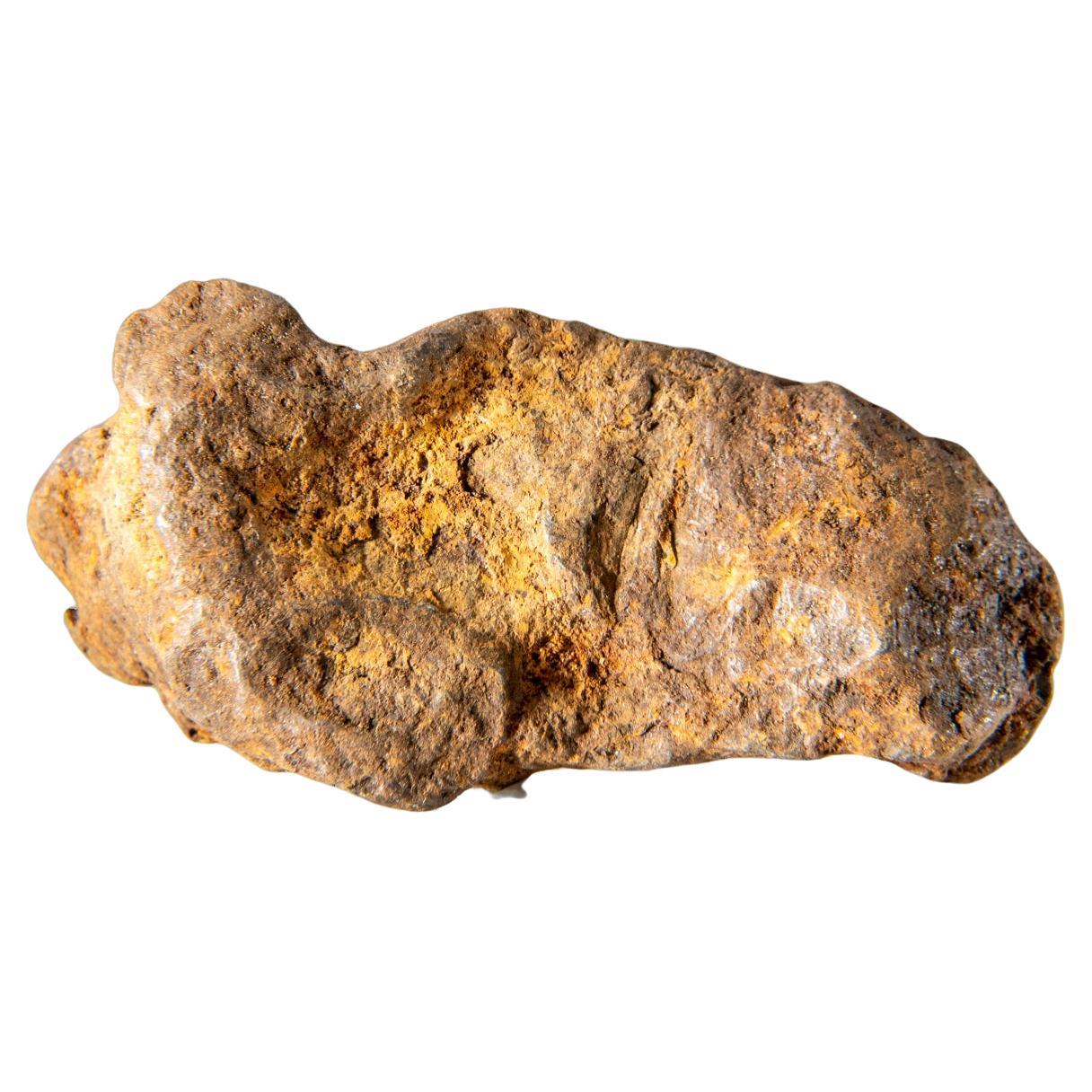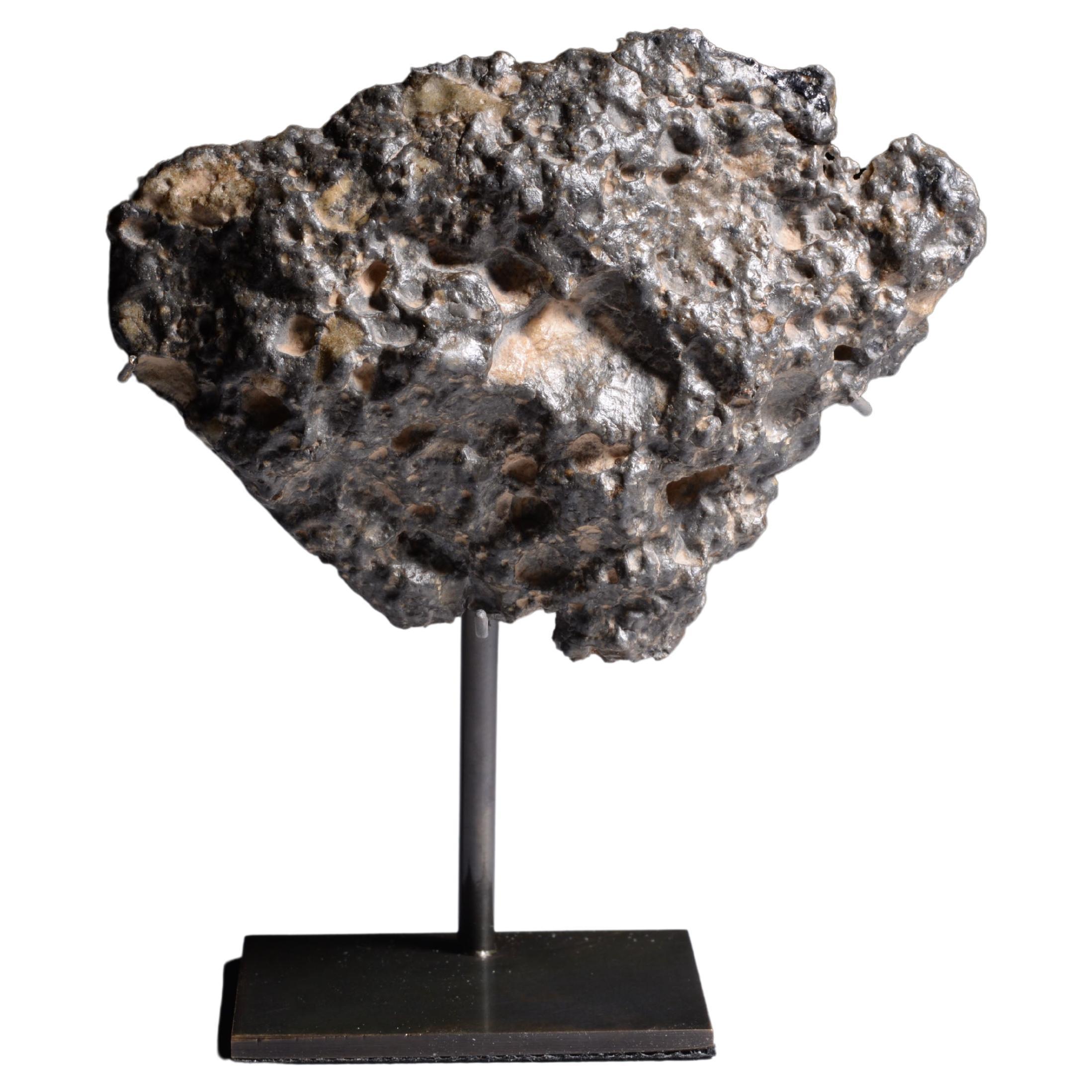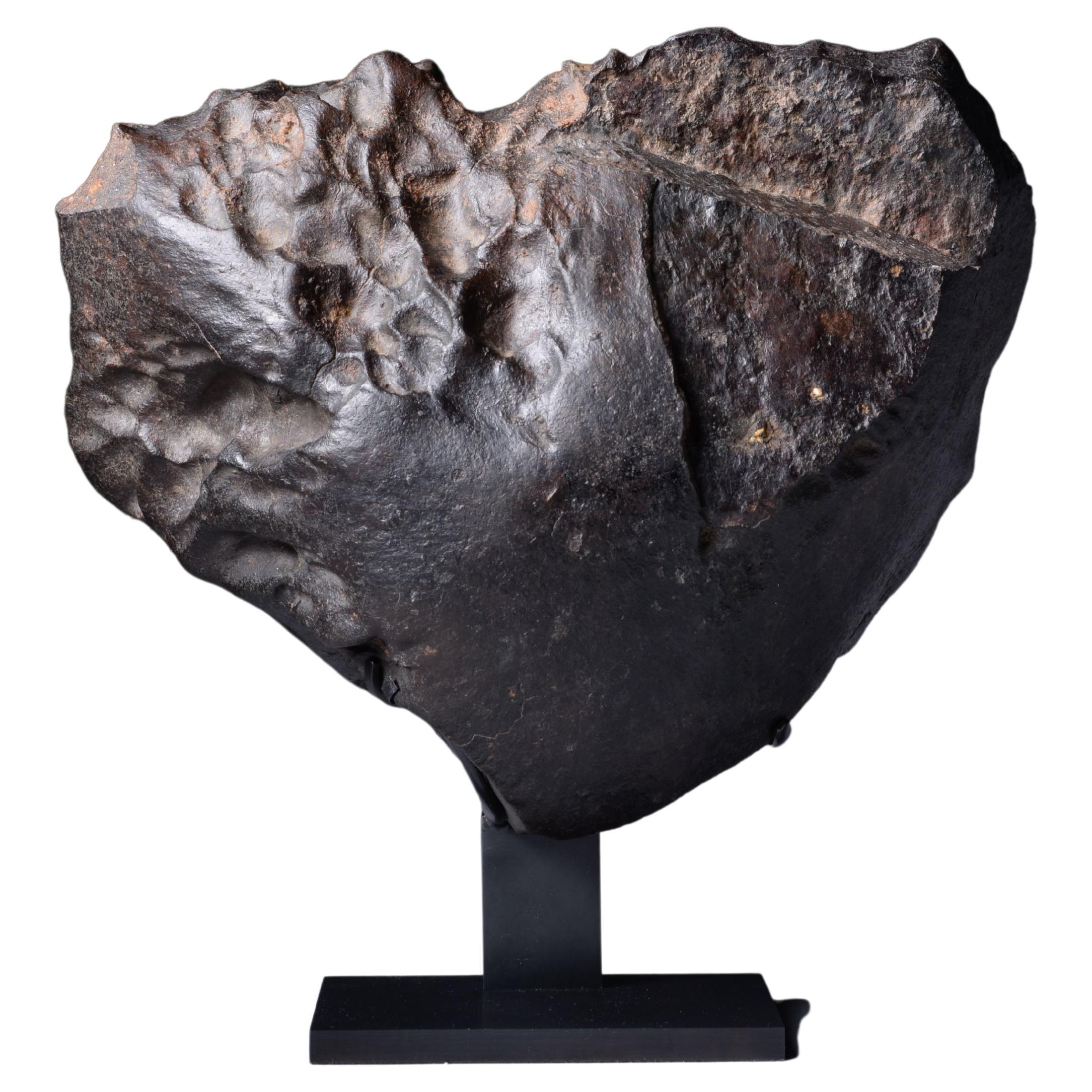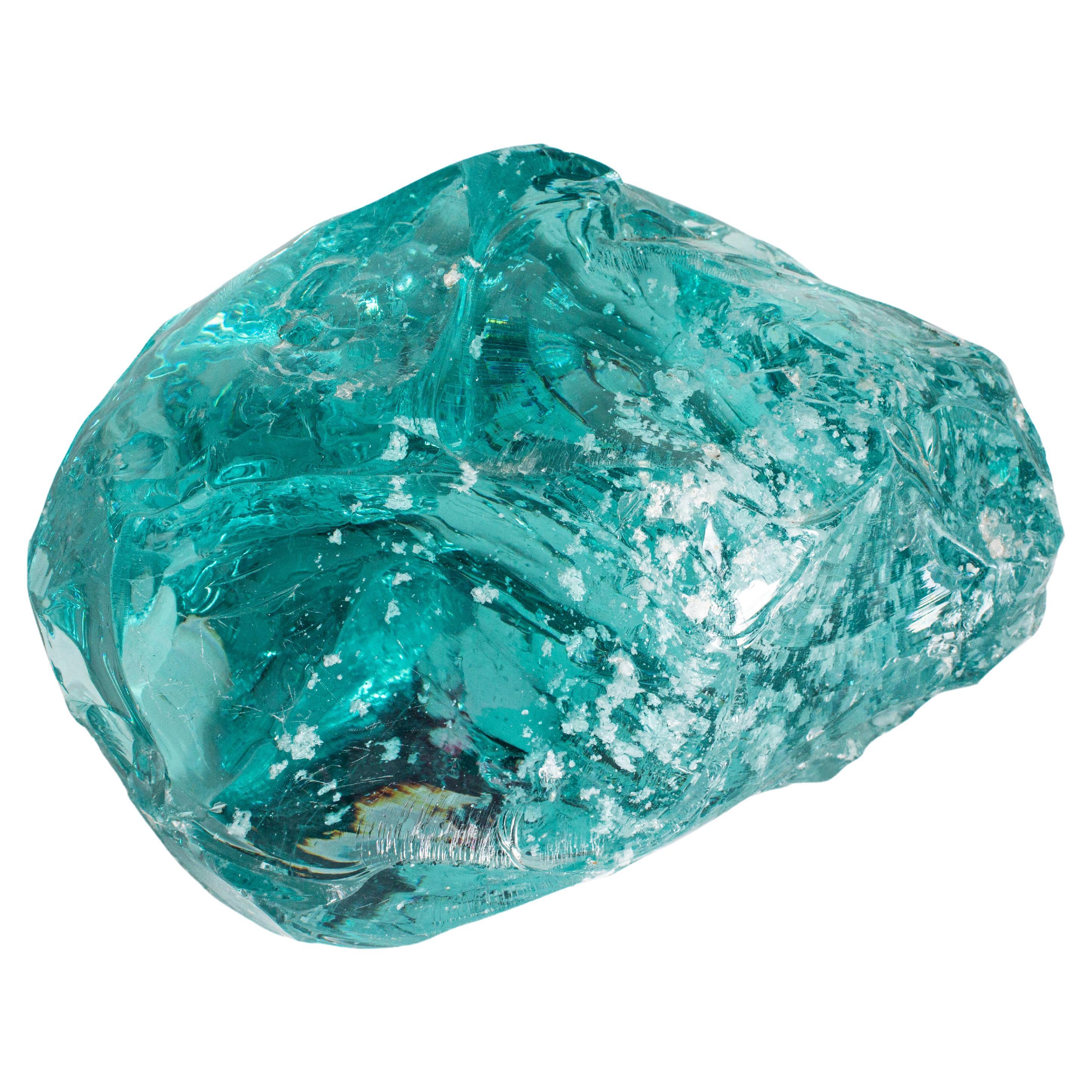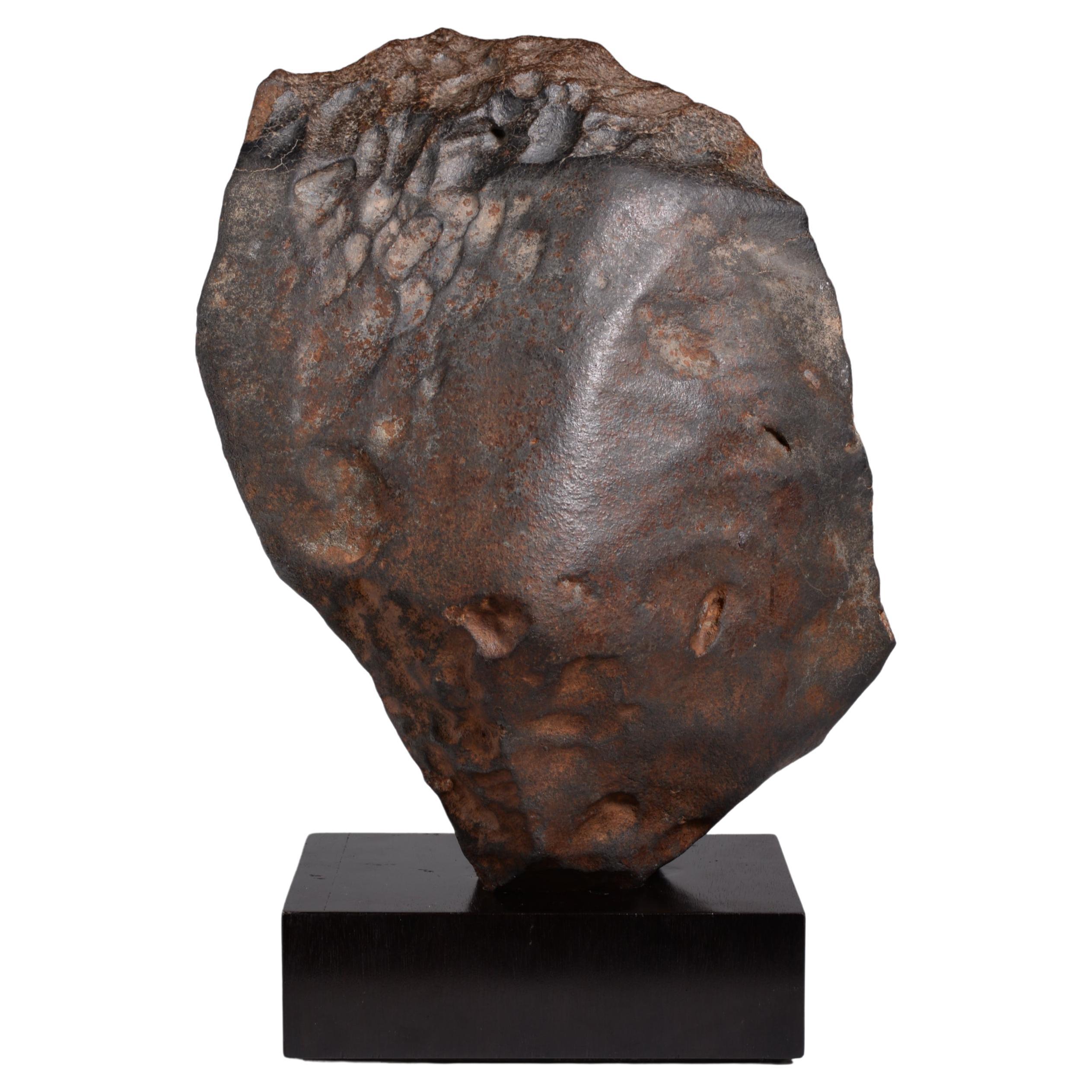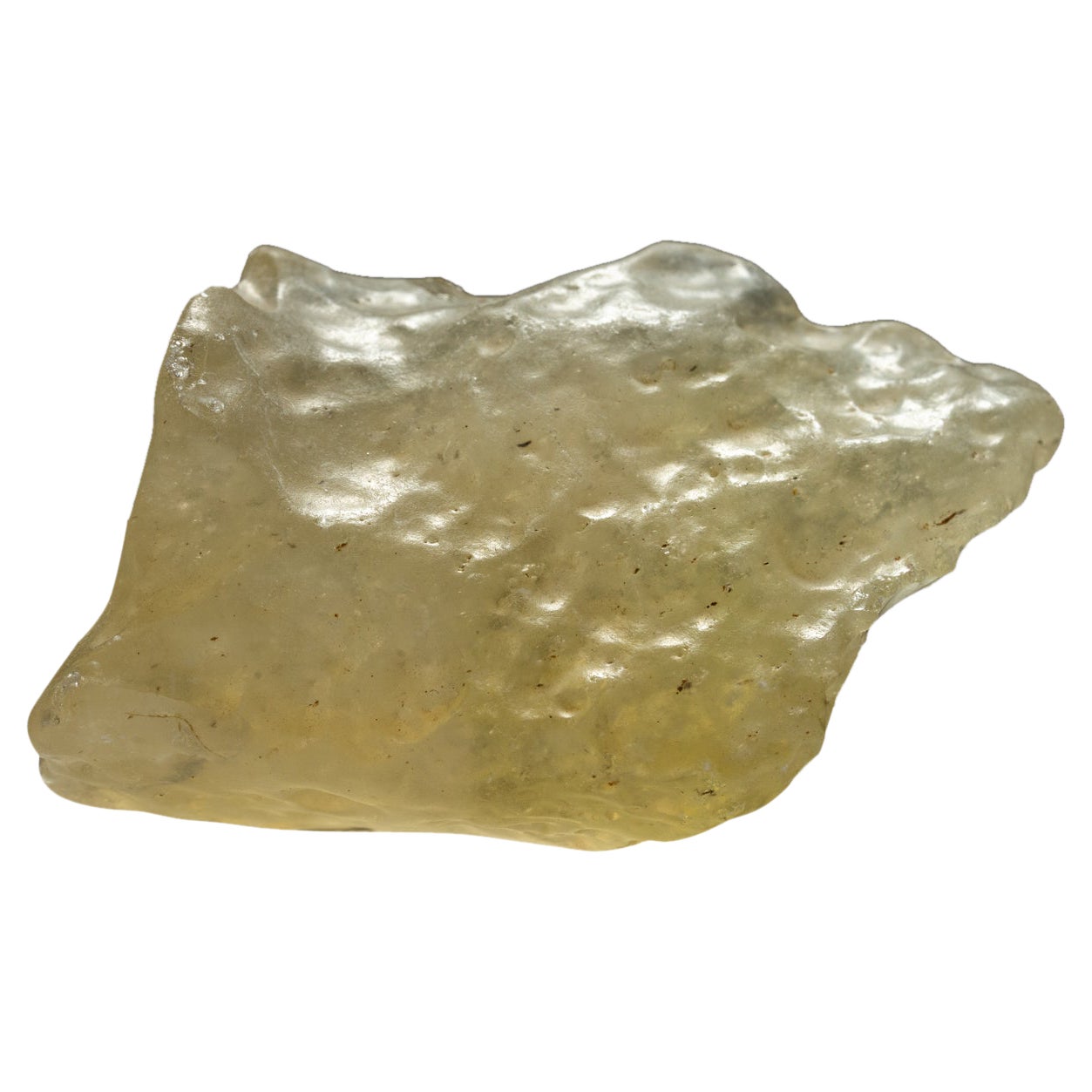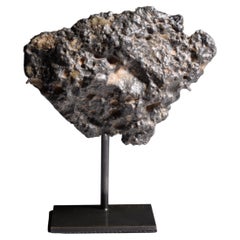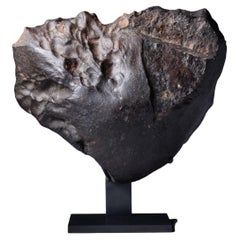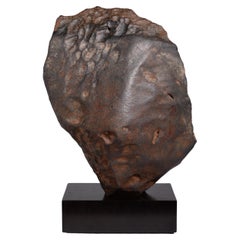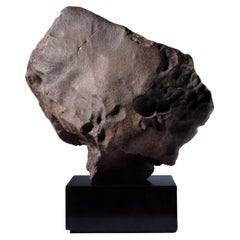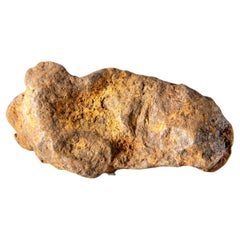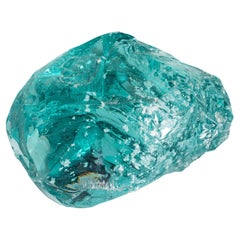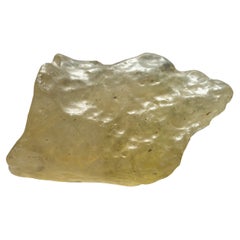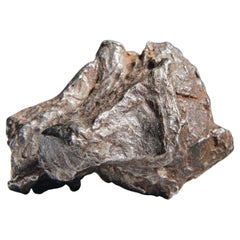Video Loading
Want more images or videos?
Request additional images or videos from the seller
1 of 12
Meteorite Impact Desert Glass
$8,250
£6,226.05
€7,127.88
CA$11,635.24
A$12,774.04
CHF 6,664.24
MX$154,583.63
NOK 83,525.94
SEK 78,703.39
DKK 53,207.75
About the Item
Libyan Desert Glass
Circa 29 Million y/o
Height: 9.5 cm
A beautiful, tactile piece of yellow glass, found between the high crested dunes of the Libyan Desert. Libyan Desert Glass (LDG) long remained a mystery to the scientific community, with some researchers speculating that these strange rocks had fallen from the Moon. In fact, these stones were formed by the explosive impact of an extraterrestrial body colliding with the Earth, producing enough energy to heat the surrounding desert sand to over 1600 degrees celsius, higher than the temperature of the hottest lava on the planet, sufficient for it to liquify and reform as what is known as a ‘tektite’ - from the Greek ‘tektos’, meaning ‘melted.’ As a result of these extraordinary temperatures, LDG specimens represent the purest silica glass to be found anywhere on Earth, owing their pebble shape and smooth, polished surface to the action of the sand blown in the arid desert winds.
Libyan Desert Glass was first recorded scientifically in 1932, but had been known and valued by locals for millenia. Much like obsidian, it was knapped to fashion blades and arrowheads in the Neolithic period. Later on, the glass' beautiful, yellow glimmer was also prized by the Ancient Egyptians, among whom it was known as ‘the rock of God.’ Most famously, Tutankhamun’s pectoral boasts a magnificent scarab carved from LDG, illustrating the enduring charm of this mysterious gemstone, only enriched by what science has since revealed about its origins, and the contrast between the delicate, sculptural forms an example such as this one takes, and the violent burst of energy out of which it was born.
Provenance:
Recovered in the Libyan desert, exact coordinates unknown.
- Dimensions:Height: 5.01 in (12.7 cm)Diameter: 2.51 in (6.35 cm)
- Materials and Techniques:
- Place of Origin:Libya
- Period:
- Date of Manufacture:Circa 29 Million y/o
- Condition:Wear consistent with age and use.
- Seller Location:London, GB
- Reference Number:Seller: 425461stDibs: LU1052232254482
About the Seller
5.0
Recognized Seller
These prestigious sellers are industry leaders and represent the highest echelon for item quality and design.
Established in 2007
1stDibs seller since 2014
103 sales on 1stDibs
Typical response time: 6 hours
Associations
LAPADA - The Association of Arts & Antiques DealersInternational Confederation of Art and Antique Dealers' AssociationsThe British Antique Dealers' Association
- ShippingRetrieving quote...Shipping from: London, United Kingdom
- Return Policy
Authenticity Guarantee
In the unlikely event there’s an issue with an item’s authenticity, contact us within 1 year for a full refund. DetailsMoney-Back Guarantee
If your item is not as described, is damaged in transit, or does not arrive, contact us within 7 days for a full refund. Details24-Hour Cancellation
You have a 24-hour grace period in which to reconsider your purchase, with no questions asked.Vetted Professional Sellers
Our world-class sellers must adhere to strict standards for service and quality, maintaining the integrity of our listings.Price-Match Guarantee
If you find that a seller listed the same item for a lower price elsewhere, we’ll match it.Trusted Global Delivery
Our best-in-class carrier network provides specialized shipping options worldwide, including custom delivery.More From This Seller
View AllLunar Meteorite - A piece of the Moon
Located in London, GB
A beautiful fragment from a lunar meteorite, among the rarest of all geological finds. This specimen belongs to NWA 11303, a feldspathic regolith breccia which formed when the shock ...
Category
Antique 15th Century and Earlier Algerian Natural Specimens
Materials
Stone
Oriented Stone Meteorite
Located in London, GB
Oriented Stone Meteorite
Chondrite
5.00 kg
Detached from its parent body by a mighty impact, this large, oriented Meteorite travelled over a hu...
Category
Antique 15th Century and Earlier North African Natural Specimens
Materials
Stone
Large Chondrite Meteorite with Regmaglypts
Located in London, GB
NWA 12759
Stone, Chondrite - L5
18.3 KG
“This specimen of the NWA 12759 L5 chondrite has a smooth posterior fusion crust where meteoritic melt pooled as the rock descended through the atmosphere and was heated by friction with molecules of air. The meteorite is from the L-chondrite asteroid that was destroyed by an energetic collision 470 million years ago.”
Dr Alan E. Rubin, PhD Department of Earth, Planetary, and Space Sciences, UCLA
Detached from its parent body by a mighty impact, this large, oriented meteorite travelled over a hundred million miles through space before falling to Earth in the North African desert. Beautiful regmaglypts radiate from the apex of its cone shaped nose. These elongated dimples formed when streaks of superheated molten rock streamed off the meteor’s surface as it blazed through the atmosphere. The entire piece is coated in a glossy, umber-coloured fusion crust and close examination reveals remnants of encrusted, orange dirt.
Whilst most meteors tumble as they travel through the Earth’s atmosphere, oriented meteorites...
Category
Antique 15th Century and Earlier Moroccan Natural Specimens
Materials
Stone
Sculptural Oriented Meteorite
Located in London, GB
Oriented Chondrite Meteorite Circa 4.56 Billion y/o
Chondrite
24 x 20 cm, 28 cm tall on base
7.1 kg
A sculptural and beautifully weathered chondrite meteorite; upon entering the atmosphere, this extraterrestrial stone would have heated the surrounding air to a temperature of over 1700 C, higher than that of the hottest lava on the planet, and enough to melt away its outer layers, leaving its surface rippled with regmaglypts, thumb-shaped impressions formed as superheated rock streaked off of the main body as it careened toward the earth. The last layer of the rock to melt would have re-solidified as the meteorite made impact, forming a charcoal coloured fusion crust, which has taken on a deep ochre-tinted patina.
Chondrite meteorites such as this example were formed at the very beginning of our solar system, by the accretion of various types of dust and small grains, adrift in the vacuum of space and, as such, provide important clues about the birth of our own planet. This piece is an especially rare specimen, known as an oriented meteorite...
Category
Antique 15th Century and Earlier Natural Specimens
Materials
Stone
Meteorite Fragment with Peridot Crystals in Iron Matrix
Located in London, GB
A complete cross section of one of the most beautiful meteorites known, displaying shimmering, translucent olivine and peridot gems, embedded in an iron-nickel metallic matrix.
The ...
Category
Antique 15th Century and Earlier Chilean Natural Specimens
Materials
Iron
Lunar Meteorite - A Piece of the Moon
Located in London, GB
A beautiful section of the lunar meteorite Gadamis 003, discovered in the oasis Berber town of Ghadames, Libya, and revealing a magnificent greyish-white spotted interior, evoking th...
Category
Antique 15th Century and Earlier Natural Specimens
Materials
Stone
You May Also Like
Genuine Gebel Kamil Meteorite from Egypt (148.9 grams)
Located in New York, NY
Gebel Kamil is a meteorite that struck Egypt approximately 5 millennia ago, resulting in a crater encircled by thousands of iron shrapnel with a combined mass of around 1,600 kilogra...
Category
21st Century and Contemporary American Natural Specimens
Materials
Other, Iron
$1,184 Sale Price
20% Off
Slag Glass
Located in Dallas, TX
Unique-shaped pieces of slag glass. Each piece will vary in size and shape. Slag glass comes from the glass used to make car windows. These pieces were sourced in Texas.
Category
21st Century and Contemporary North American Organic Modern Paperweights
Materials
Slag Glass
$390 / item
Libyan Desert Glass Tektite (40.5 grams)
Located in New York, NY
Libyan Desert Glass is a substance found in areas in the eastern Sahara, in the deserts of eastern Libya and western Egypt. Fragments of desert glass can be found over areas of tens ...
Category
21st Century and Contemporary Egyptian Natural Specimens
Materials
Crystal, Other
$648 Sale Price
20% Off
Genuine Natural Sikhote-Alin Meteorite from Russia (107 grams)
Located in New York, NY
An iron meteorite fell on the Sikhote-Alin Mountains, in southeastern Russia, in 1947. Though large iron meteorite falls had been witnessed previously and fragments recovered, never ...
Category
21st Century and Contemporary Russian Natural Specimens
Materials
Other, Iron
$800 Sale Price
20% Off
24 Gram Brahin Meteorite Slice
Located in New York, NY
This meteorite was acquired from the Bethany Sciences collection and was once a part of the private collection of Meteorite Man Robert A. Haag. It includes an informational Certifica...
Category
Antique 15th Century and Earlier Belarusian Natural Specimens
Materials
Crystal, Other
Large Slag Glass Green Chunk Natural Specimen Rock 45 Pound Stone Garden Element
Located in Philadelphia, PA
Large Slag Glass Green Chunk Natural Specimen Rock Approx 45 Pound Stone Garden Element. Circa Late 20th Century. Measurements: 7" H x 18" W x 10" D.
Category
Late 20th Century Unknown Art Deco Historical Memorabilia
Materials
Glass
